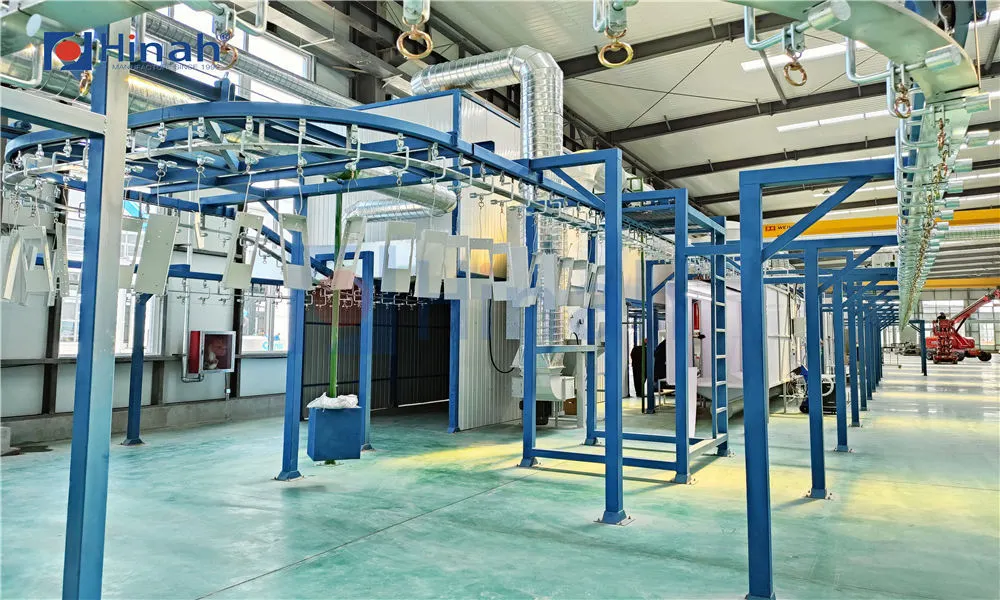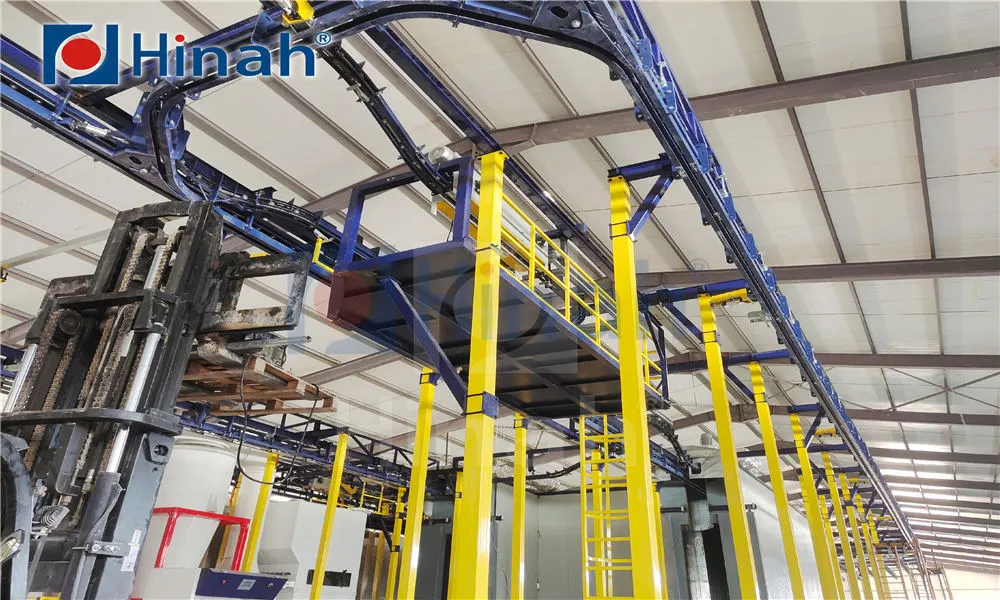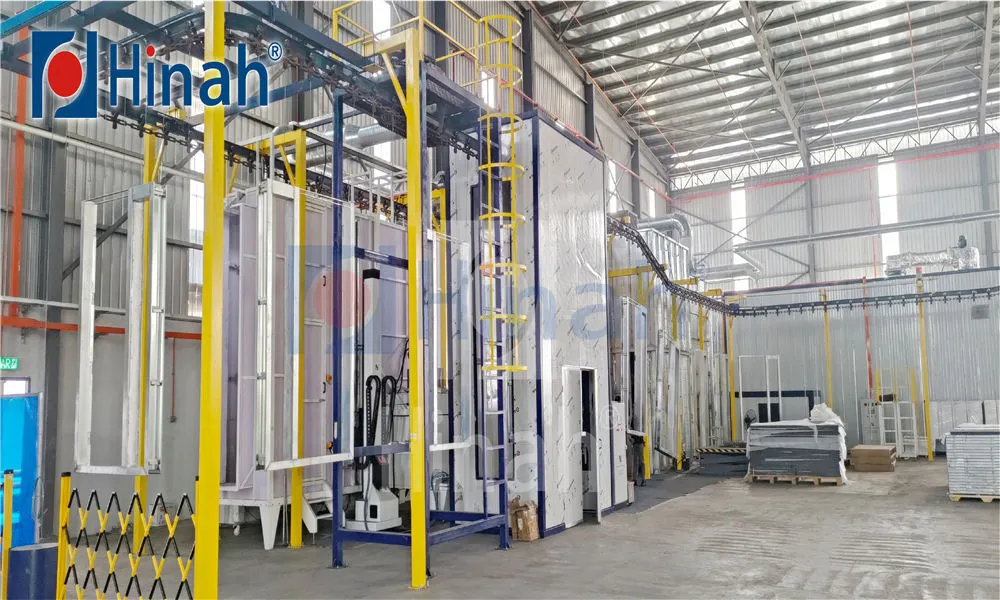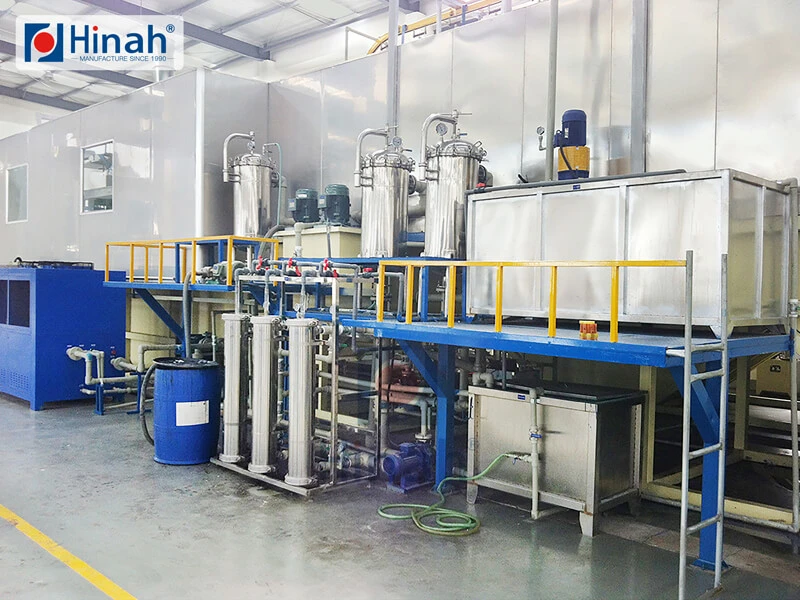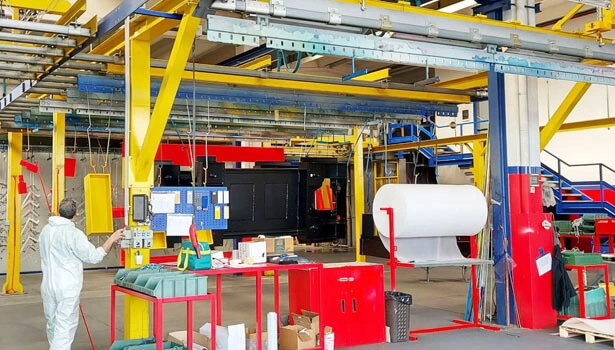In today's competitive manufacturing landscape, achieving a high-quality, durable finish on products is no longer a luxury—it's a necessity. For many businesses, this means moving beyond traditional liquid painting methods and embracing the efficiency and consistency of automated powder coating lines. This comprehensive article delves into the world of automation, exploring the technology, the investment required, and the practical considerations for implementing a state-of-the-art finishing system.
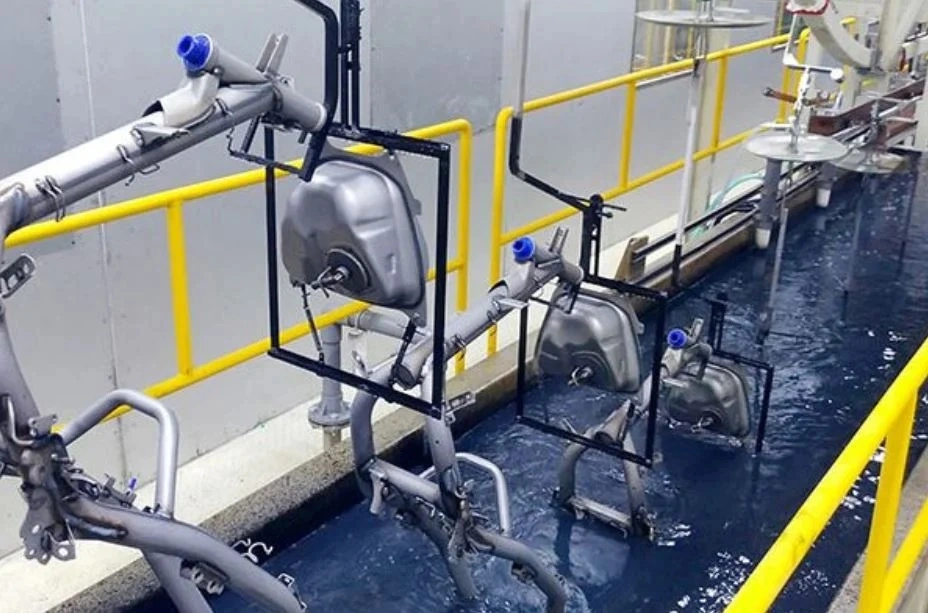
What is an Automated Powder Coating Line?
An automated powder coating line is a integrated system designed to apply a dry, electrostatically charged powder to a surface, which is then cured under heat to form a hard, protective finish. The "automated" aspect signifies that the entire process—from pre-treatment and application to curing and cooling—is managed with minimal human intervention, typically through programmable logic controllers (PLCs) and robotics.
These systems are the backbone of high-volume manufacturing across industries like automotive, aerospace, appliances, and furniture. A standard powder coating line consists of several key stages:
Pre-treatment: A series of wash, rinse, and chemical stages to clean and prepare the metal substrate for coating.
Drying: Removing moisture from the part after pre-treatment.
Application: The booth where the powder is applied, often using automatic guns mounted on reciprocators or robots.
Curing: An oven where the powder melts, flows, and cures into a continuous film.
Cooling: Allowing the parts to cool down enough to be handled.
Material Handling: An overhead conveyor or floor-mounted system that moves parts seamlessly through each stage.
The shift from manual to automated powder coating lines brings unparalleled benefits: dramatically increased throughput, exceptional consistency in finish quality, reduced labor costs, and maximized powder material efficiency, often exceeding 95%.
One of the most pressing questions for any business considering an upgrade or new installation is: what determines the automatic powder coating line price? There is no single number, as the cost is influenced by a wide array of factors. Understanding these variables is crucial for accurate budgeting.
The total powder coating machine cost for a complete automated system is rarely under $100,000 and can easily reach several million dollars for large, complex installations. Key factors include:
System Scale and Capacity: The size and weight of the parts you need to coat directly influence the size of the ovens, conveyors, and booths. A line for coating small brackets is vastly less expensive than one designed for truck frames.
Level of Automation: A line with simple automatic guns is a step up from manual. Adding a multi-axis robot for complex parts increases the automatic powder coating line price significantly but offers unmatched application precision.
Pre-treatment Complexity: A simple three-stage wash (clean, rinse, seal) is less expensive than a sophisticated seven-stage zinc phosphating system. Environmental regulations regarding water usage and treatment can also add cost.
Oven Technology: The type of heating (electric vs. gas infrared vs. convection), insulation quality, and energy efficiency all impact the upfront investment and long-term operating costs.
Conveyor System: The choice between overhead power-and-free conveyors and simpler monorail systems has a major cost implication. Overhead systems offer more flexibility but at a higher price point.
Additional Features: Options like color-change booths (for switching powder colors quickly), sophisticated recovery systems, and advanced control software all add to the overall powder coating machine cost.
When evaluating powder coating systems, it's essential to view them as a long-term capital investment. The higher initial outlay for a well-designed automated powder coating line is often justified by the rapid return on investment (ROI) through labor savings, reduced rework, and lower material waste.
Core Components of Modern Powder Coating Systems
To truly understand the value proposition, it's important to look under the hood of modern powder coating systems. Each component plays a vital role in the overall efficiency and quality of the finish.
1. Pre-Treatment System: This is arguably the most critical stage. Any failure in cleaning and preparing the surface will lead to coating failure, no matter how advanced the application technology. Modern systems are designed to be efficient with water and chemicals, reducing the environmental footprint.
2. Application Booth and Recovery System: The heart of the automated powder coating line. Automatic guns, often mounted on reciprocators that move up and down, provide consistent coverage on parts with a uniform geometry. For complex shapes, robotic arms are used to follow the part's contours perfectly. The recovery system, typically a cyclone and cartridge filter combination, reclaims oversprayed powder so it can be reused, directly impacting material savings.
3. Curing Oven: Proper curing is non-negotiable. Industrial ovens must provide uniform temperature distribution to ensure every part on the line reaches the required metal temperature for the specified time. Inaccurate curing leads to under- or over-curing, affecting the finish's mechanical properties and appearance.
4. Material Handling Conveyor: The silent workhorse of the operation. The conveyor system must be robust, reliable, and precisely timed to ensure parts spend the correct amount of time in each zone. Modern powder coating systems often integrate smart conveyors that can track individual parts or batches.
5. Control System: The brain of the entire operation. A centralized PLC controls all parameters—oven temperature, conveyor speed, gun triggering, and airflow—ensuring repeatable process control and providing valuable data for quality assurance and traceability.
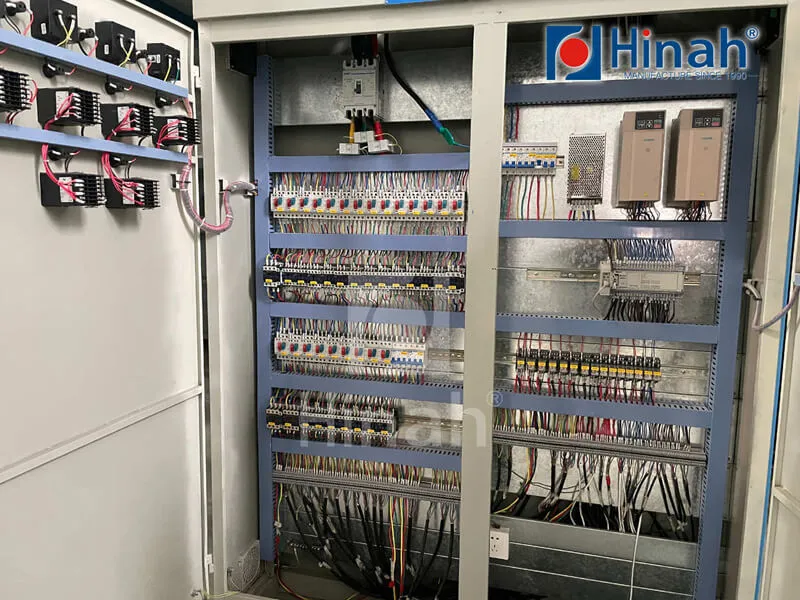
Navigating the Challenges: Common Problems with Automated Lines
Even the most sophisticated automated powder coating lines can encounter issues. Proactive maintenance and understanding common pitfalls are key to minimizing downtime.
1. Poor Adhesion and/or Film Defects (Orange Peel, Craters):
Cause: Almost always traceable to inadequate pre-treatment. Oil, grease, or rust left on the surface prevents proper bonding. Contamination in the powder or from compressed air can also cause craters and pinholes.
Solution: Rigorously monitor pre-treatment chemical concentrations, temperatures, and spray pressures. Ensure proper air filtration for the application system.
2. Inconsistent Film Thickness:
Cause: Incorrect gun settings (KV, microamps), uneven gun-to-part distance, or a worn-out pump or hose delivering powder inconsistently. For robots, an inaccurate path program can be the culprit.
Solution: Implement a regular preventive maintenance schedule for application equipment. Regularly verify and calibrate gun outputs. For robots, ensure path programming is optimized for the part geometry.
3. Powder Contamination and Color Change Issues:
Cause: Inadequate cleaning of the booth, guns, and recovery system during a color change. This leads to "cross-contamination," where flecks of a previous color appear in the new finish.
Solution: Invest in a booth designed for fast color changes. Establish and strictly follow a detailed color change procedure. Using a dedicated cartridge module for specific colors can drastically reduce changeover time.
4. Curing Problems (Under/Over-Curing):
Cause: Oven temperature not reaching setpoint, incorrect line speed, or variations in part mass and material (e.g., thick vs. thin gauge metal on the same rack).
Solution: Regularly validate oven temperature profiles using dataloggers. Adjust line speed based on the part with the highest thermal mass. Consider racking strategies to group similar parts together.
5. Conveyor Maintenance and Jamming:
Cause: Lack of lubrication, chain wear, or a mechanical failure can bring the entire production line to a halt. Build-up of powder on hangers can also cause parts to become unbalanced or fall off.
Solution: A strict daily and weekly conveyor maintenance schedule is essential. Regularly clean and inspect trolleys, chains, and hangers.
Is an Automated Line Right for Your Business?
The decision to invest in an automated powder coating line is significant. It is most justifiable for businesses with:
High Production Volumes: The system needs to run for multiple shifts to realize the ROI.
Consistent Part Sizes: While robots handle variety, a limited range of part sizes simplifies system design and optimization.
A Focus on Highest Quality: Industries with stringent aesthetic and durability standards benefit immensely from the consistency of automation.
Long-Term Projects: The investment is easier to justify for multi-year production contracts.
For smaller shops or those with highly custom, low-volume work, a manual or semi-automated powder coating line may remain a more practical and financially viable solution.
The evolution of powder coating systems towards full automation represents the future of industrial finishing. While the automatic powder coating line price requires a substantial capital commitment, the long-term benefits in productivity, quality, and operational cost savings are undeniable. By carefully analyzing your production needs, understanding the factors that influence powder coating machine cost, and being aware of potential operational challenges, you can make an informed decision that positions your business for growth and competitiveness for years to come. The key to success lies not just in purchasing the equipment, but in mastering the process it enables.


